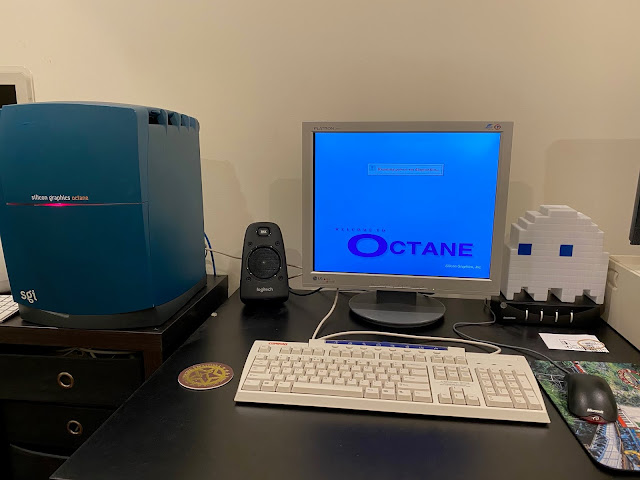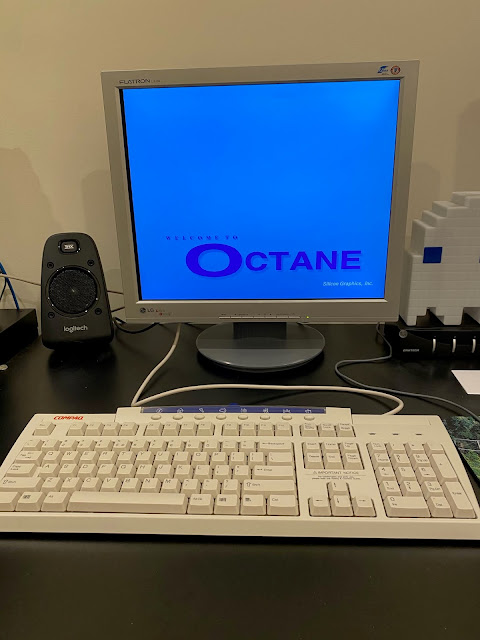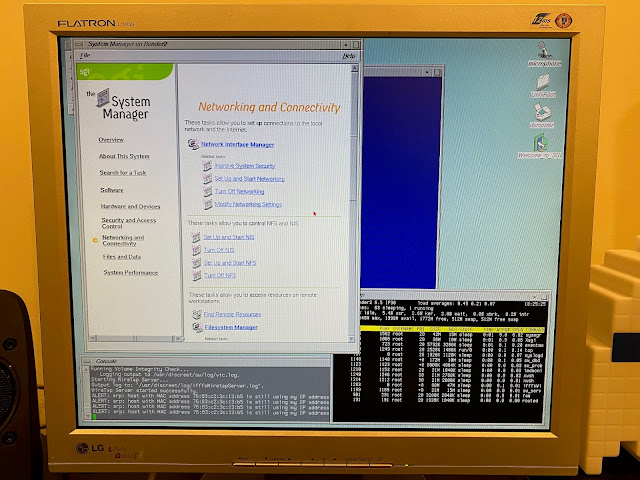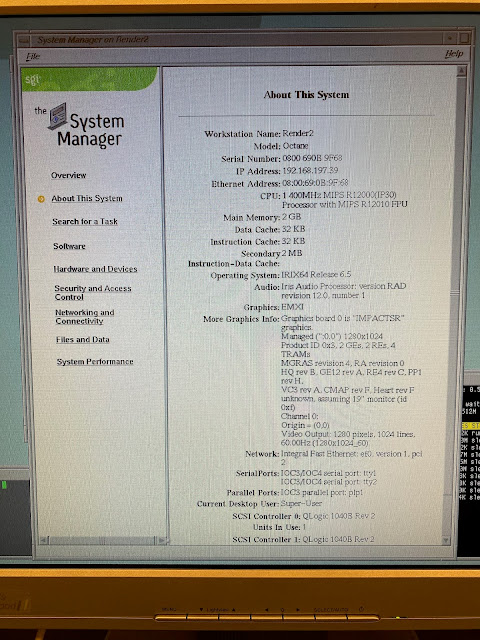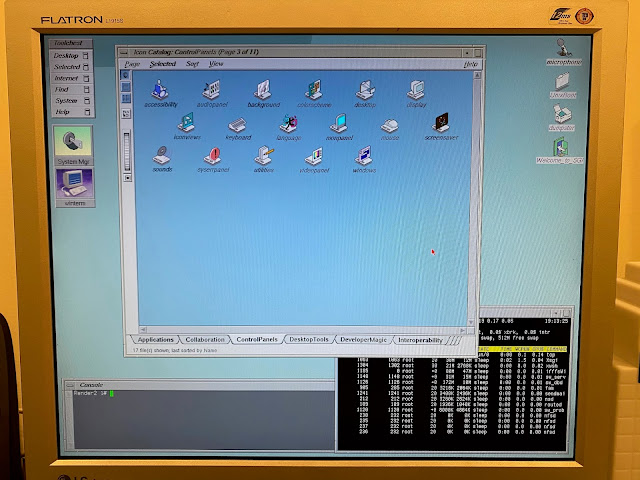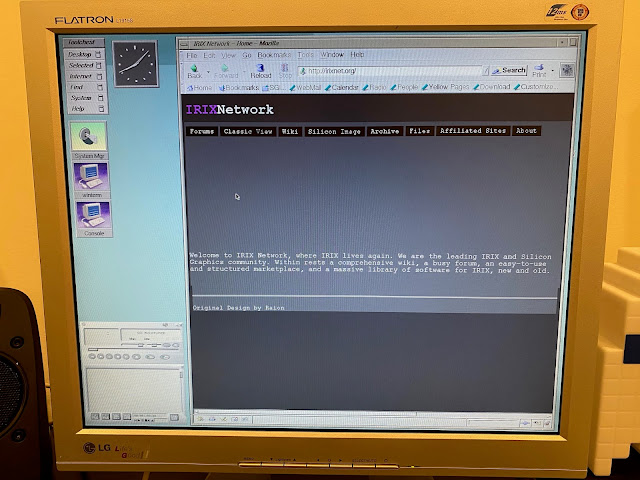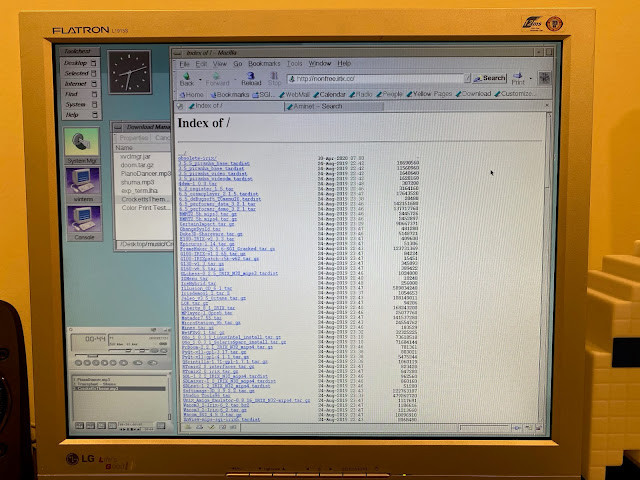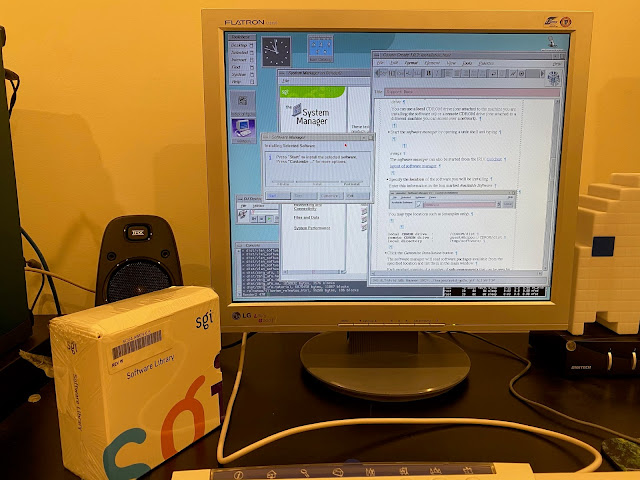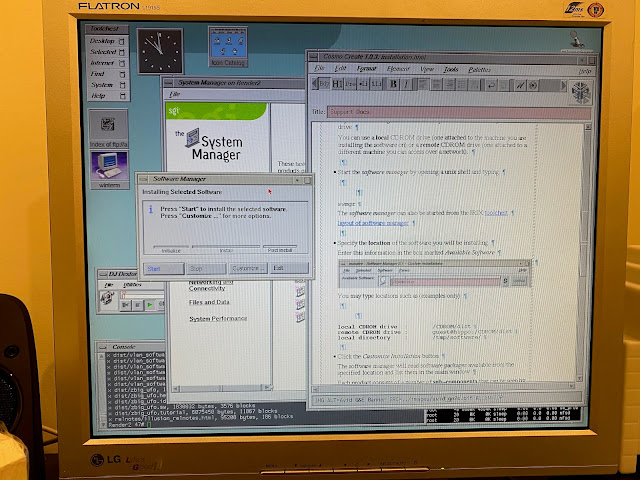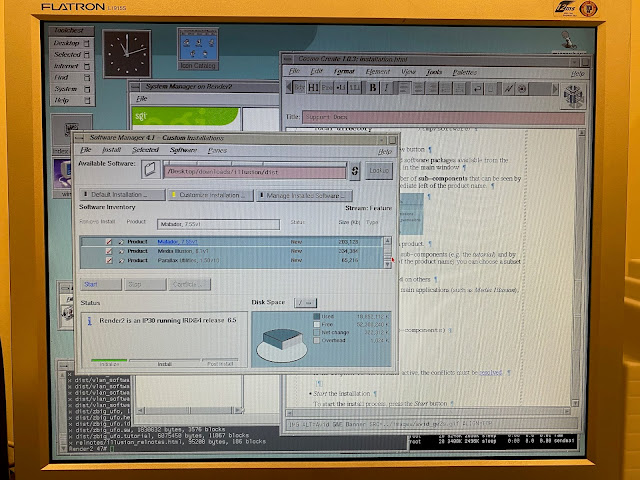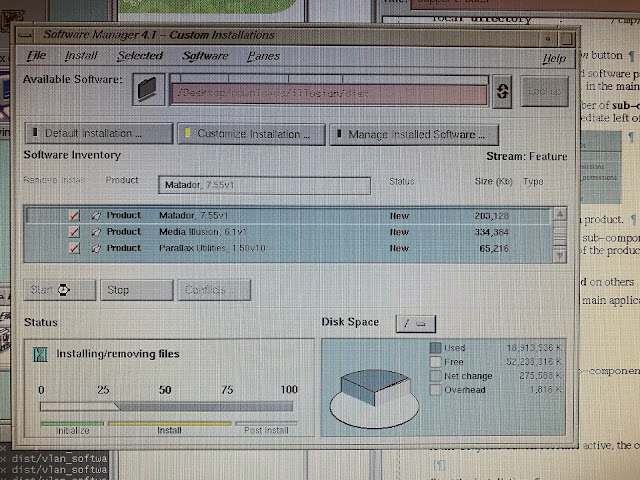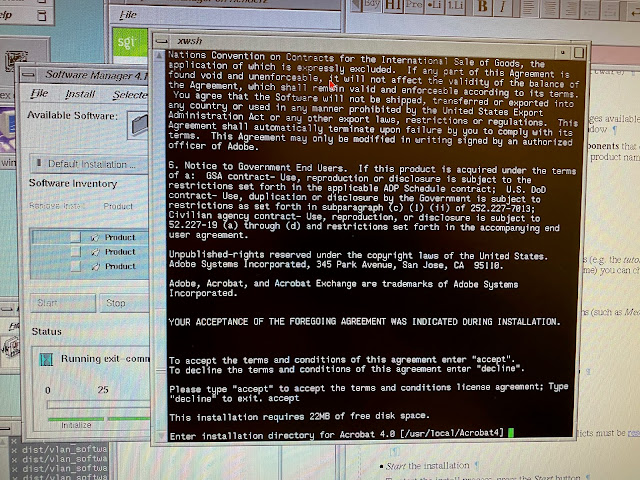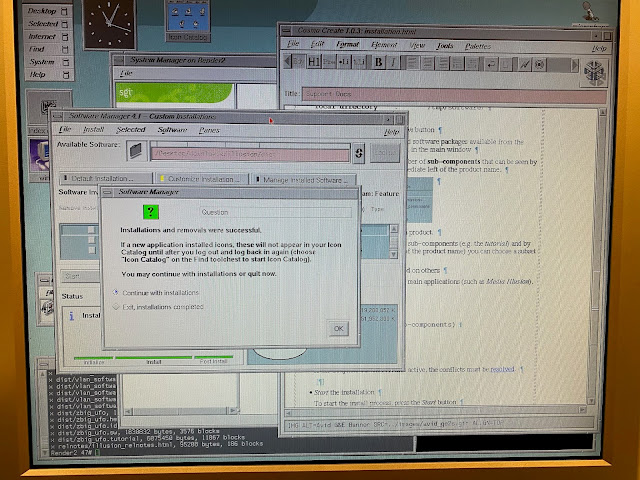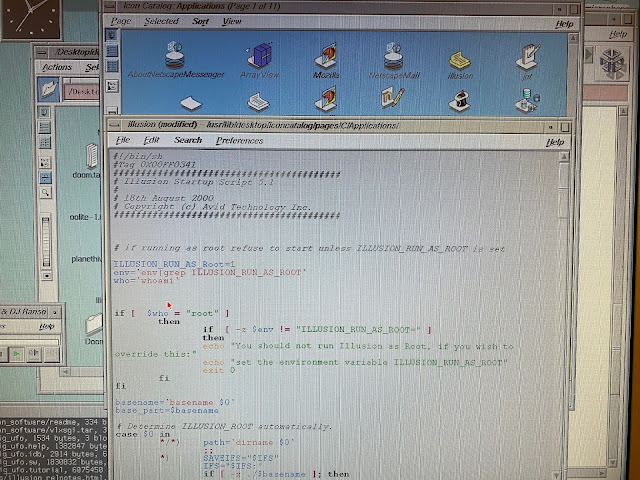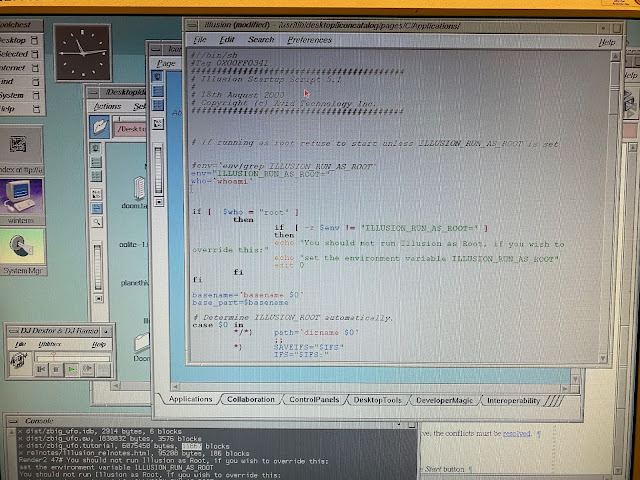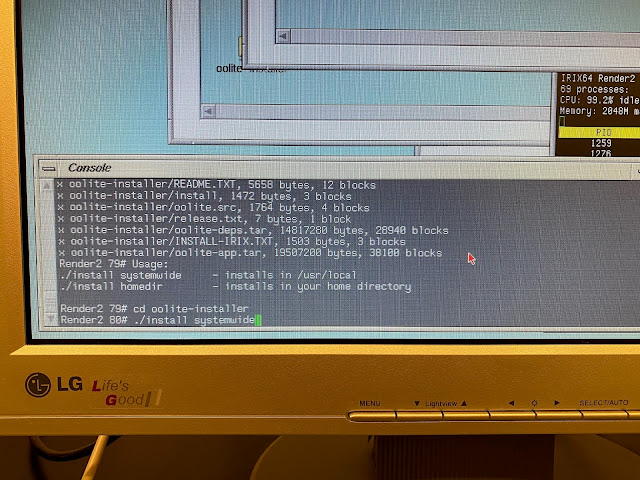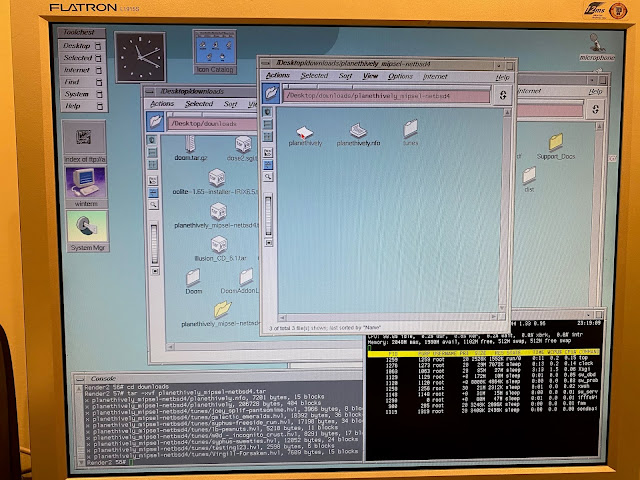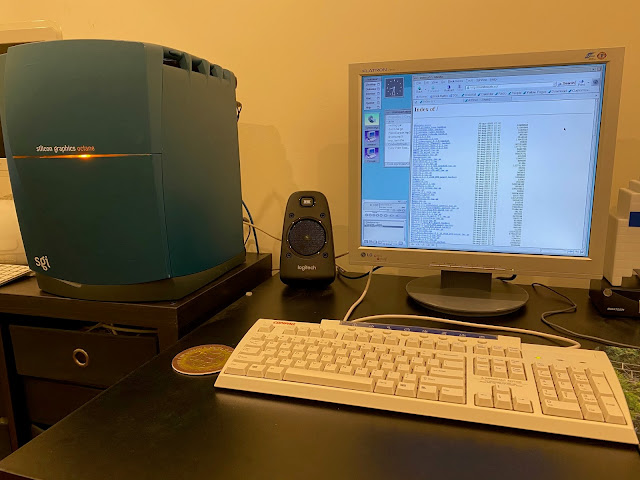New Silicon Graphics Octane has arrived!
I finally own a Silicon Graphics system! These machines were so expensive when they were new, but nowadays you can pick them up quite cheaply. I picked up an Octane system from a Australian seller, and I now have it working. Let's take a closer look at this amazing system.

These systems cost a fortune when they were for sale. Seriously.
Back in 1998 these systems were selling for $20,000 for the entry level 225Mhz R10000 model with 128MB memory and 4GB SCSI disk!
They used a 64bit MIPS R10000/R120000 or R14000 processor which ran a 64bit Irix Unix OS. In 1998! My PC, Mac and Amiga were 16 bit computers at that time.
Higher models like the 250Mhz model sold for $40,000.
Check out this old article from C|Net about it:
https://www.cnet.com/news/sgi-to-slash-workstation-prices/
Just wow. With those kind of prices (and me bring a Uni student at that time), it was just a fantasy to ever see, let alone own one of these machines.
I remember going to an electronics show in Perth at the time, when they had the Octane and O2 on display running Maya and AutoCAD, and the sales guys were very keen to stop young obviously poor people like me having a go on it. I just looked from a distance and dismissed it as something I would never be able to afford.
Now, in 2020, the world has changed. High end workstations are much cheaper now, running on Intel 64bit hardware. Still 64bit after all these years. Shows how far ahead of the pack SGI was back then. These SGI systems were basically servers in their design philosophy, but as an end-user workstation!
SGI lost it's core customer base in the early 2000's when Maya was ported to much cheaper Intel PC's could no longer compete as they lost their performance advantage as MIPS eventually fell behind. They tried selling 64bit Intel systems (without the amazing MIPS based architecture) but no longer had the advantage over their other competition who sold cheaper systems. They sunk completely back in 2009, HP bought what was left and I believe are no more in 2020.
But the amazing hardware SGI released survives, and fortunately due to it's niche original user base (which is no longer interested in these systems), they are very cheap to buy compared to their original pricing. This one cost AUD$800. Maybe I paid too much, but it is quite a system for the money, and I can finally see what the fuss was all about back then...
It arrived well packaged. It took me a long time to unpack it, which I was very grateful for as the system appeared to survive the trip with no damage.
The top half of the front case opens on a funky plastic hinge which I can see would be quite fragile. When opened you can see the two external facing slightly taller than normal 3.5 inch bays (I believe the missing cover bay originally used to house an optional SCSI Tape drive for backups), and the power button.
I was originally looking for the lower end O2 system, which is kind of the "baby" SGI machine, but it is much slower, and doesn't feature the same amazing internal setup of the Octane.
There is one SGI 73GB SCSI drive installed in the lower bay using a Drive caddy/sled. Much like servers, these are designed to be easily swappable, but it does mean locating a SGI drive caddy/sled if I want to add additional drives, which I would like to do. I'll keep an eye out for one.

This main motherboard module in the Octane has Digital SPDIF audio ports in/out, RCA ports in/out, Coaxial digital in/out - nice:
It also has a external 68 pin SCSI port connector, network port, a port I am not sure what it is for, 2 PS/2 ports for keyboard/mouse and two serial ports at the bottom.
I hate proprietary connectors. Apple love them, and use them to charge whatever they like for converters that should not be necessary. SGI did the same thing with this connector.
I took the PS/2 Compaq keyboard and mouse from my neighbouring 1Ghz Pentium 3 PC to use on the Octane temporarily as below. I have located an original Silicon Graphics keyboard and mouse and they are on their way to me soon!
After booting up and logging into the machine as root, the IRIX 6.5 desktop appears, with the SGI System Manager application, top processes and small console window open and ready for me to run stuff.
The Icon Catalog view is nice. Shows the launch icons for various programs, divided into multiple tabs at the bottom which you can easily switch between:
I configured the network settings to get the SGI Octane online. Fortunately the Irix focused websites have carefully continued using older HTML standards so they work with the very old web browsers included with Irix.
One issue is that I don't have a SCSI CD drive. The intention is to setup the FTP install option which allow you to install the OS on the Silicon Graphics Octane over the network. It needs a specially prepared Ubuntu machine to make this work. I plan to try this when I have another SCSI disk to experiment on.
I next got the options to install with the setup of Cosmo Create - the install window is great and has all the info you need:
Now I can see the program icons in the Icon Catalog window, but it complains on launch that I need to set some parameters to be able to run as root it wasn't immediately obvious how I supposed to do that:
Yeah I know, I shouldn't run as root, etc etc. Just wanted to play with it quickly and I haven't setup another user on the machine yet.
It is really great to finally have an Silicon Graphics Octane system:
As mentioned I will explore this machine in more detail soon. I plan to get another SCSI hard disk and attempt an install from scratch so I can learn how to build one of these machines myself.
I still have a lot to learn, but that is the best part right of playing with new systems like this, right? :-)








